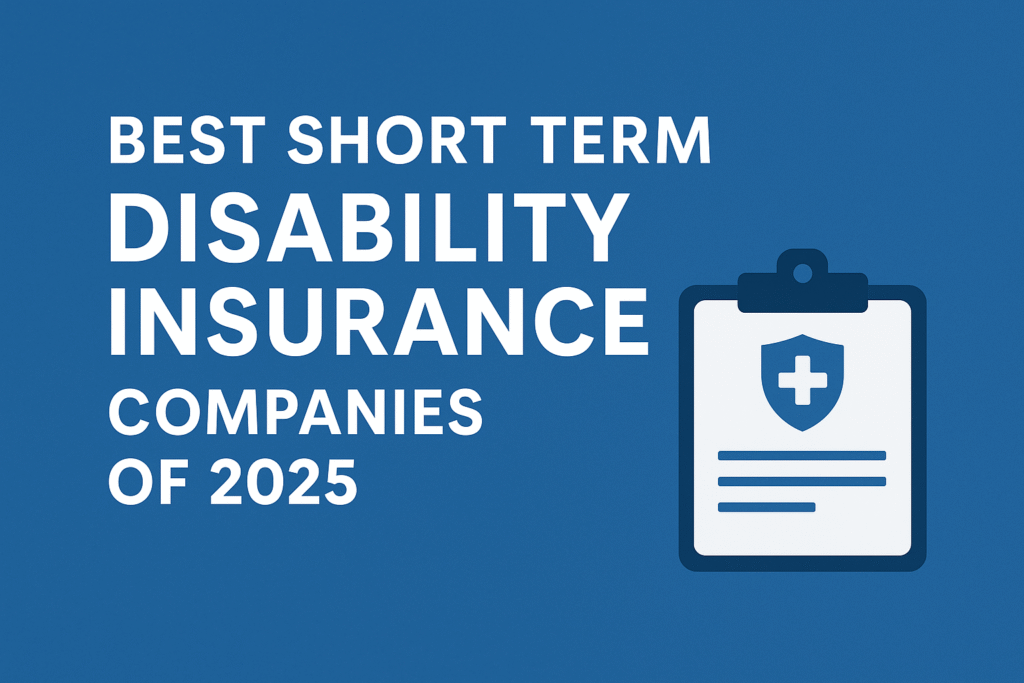Disability insurance continues to be one of the most important yet underutilized financial protections available today. Many individuals think of health insurance, auto insurance, or retirement savings as their primary safety nets, but they often fail to consider what would happen if a medical problem or injury suddenly left them unable to work. Without income, even a short absence from employment can quickly create major financial stress. Disability insurance provides income protection, offering peace of mind and stability during these periods of uncertainty.
There are two primary categories of disability insurance. Short term disability insurance is designed to replace income for a limited duration, typically from several weeks up to two years. Long term disability insurance extends further, covering conditions that last many years and sometimes even up to retirement age. A third option, term disability insurance, provides benefits for a specific number of months or years. The distinctions among these types of coverage matter greatly, since each addresses different risks and financial circumstances. For some individuals, including federal employees, specialized policies such as those offered by Postal Life & Disability Plans may be the most appropriate choice, because they are tailored to the needs of specific professions and employment structures.
Understanding Short Term Disability Insurance
Short term disability insurance is structured to address temporary medical issues that prevent someone from working. This includes situations like pregnancy and postpartum recovery, musculoskeletal injuries, recovery after surgery, or serious illnesses that require time away from the workplace. The elimination period, often ranging from one week to one month, determines how soon benefit payments begin. While shorter elimination periods allow faster access to income replacement, they are usually paired with higher monthly premiums. The benefit period can be as short as a few weeks or extend as long as two years depending on the policy chosen.
Short term disability insurance coverage is best understood as a bridge. It provides disability benefits when monthly income is interrupted, ensuring households remain stable. The size of the monthly benefit will depend on the policy terms, but in many cases it replaces fifty to seventy percent of earnings. Understanding how much disability insurance you may need is important because underestimating income requirements can leave families struggling during recovery.
Payments are generally made directly to the policyholder, ensuring that the insured has control over how to allocate the funds. This flexibility is a defining feature of disability coverage and makes it especially valuable for households with ongoing mortgage payments, childcare costs, or other obligations that cannot be paused during a period of medical recovery.
The Importance of Income Protection
The fundamental purpose of disability insurance is income replacement. While health insurance pays for medical treatment, it does not address the problem of lost wages. Income protection ensures that families remain financially stable even when a paycheck stops temporarily. Without this safety net, the effects of a temporary disability could include late payments, mounting debt, and significant stress.
Disability insurance benefits are structured to reflect real-world living costs. The monthly benefit amount is not random but based on monthly income, occupation class, and insurer calculations. This is why questions such as “how much disability insurance should I carry” become critical during the purchasing process. A benefit amount that looks reasonable on paper may fall short when mortgage obligations, utilities, food, and medical expenses are considered together.
Consider the example of a single-income household where the breadwinner suffers an injury requiring several months of recovery. Without disability insurance, the family may be forced to rely on savings or credit cards. With coverage in place, income replacement ensures that essential bills can still be paid. This kind of stability explains why disability coverage is increasingly viewed as a necessary complement to other forms of insurance.
Conditions That Qualify for Benefits
The conditions that qualify for short term disability insurance vary across providers but generally include pregnancy, musculoskeletal injuries, mental health conditions, and recovery from surgery. Many policies also cover illnesses like cancer treatments or severe infections that temporarily prevent employment. Every insurance company defines disability differently, so it is critical to read policy details carefully. Understanding these definitions ensures that expectations match the reality of what will be covered when a claim is filed.
When evaluating disability insurance coverage, it is equally important to consider exclusions. Some policies may limit benefits for pre-existing conditions or impose restrictions on certain types of injuries. Knowing how the insurer processes disability claims can help avoid disputes later.
The Application and Claims Process
Applying for disability insurance involves providing detailed information about occupation, income, and medical history. Some providers require medical exams, while others accept only documentation. Once a policyholder becomes disabled, the claims process typically includes submitting medical verification, completing forms, and meeting the insurer’s definition of disability. If approved, benefit payments are made directly to the insured. This arrangement gives households flexibility in determining how to spend the funds, whether on housing, groceries, or medical costs.
The disability claims process is often overlooked when selecting a provider, but it should not be. A smooth process ensures that disability insurance benefits arrive on time and that the promised monthly benefit flows without interruption. Since families depend on this income replacement to cover daily living expenses, delays in claims can create significant stress.
Top Providers of Disability Insurance in 2025
In 2025, several companies stand out for their disability insurance offerings. Allstate leads the market as the best short term disability insurance company this year. Allstate is recognized for its nationwide reach, strong financial ratings, and customizable policy options. Its short term disability insurance policies can be adapted to suit different financial needs, making it a reliable choice for a broad range of individuals.

Guardian Life Insurance Company remains an excellent option for self-employed professionals and higher income earners. Mutual of Omaha continues to provide affordable monthly premiums and flexible benefit periods, appealing to families seeking balance between cost and coverage. Assurity offers budget-friendly disability insurance policies that include valuable built-in benefits. State Farm provides both life and disability insurance, making it attractive to consumers who prefer bundled protection. Oregon Life Insurance Company is known for its innovation, offering rehabilitation benefits, family care benefits, and residual disability coverage.
Alongside these national leaders, certain specialized providers focus on unique groups. For example, Postal Life & Disability Plans has earned recognition for designing short term disability coverage specifically for USPS employees. By tailoring policies to the unique employment structure of federal workers, Postal Life & Disability Plans ensures that postal employees receive coverage that aligns with their needs.
Choosing the Right Disability Insurance Policy
Selecting the right disability policy requires balancing affordability, benefit amounts, and provider reliability. Monthly premiums must be weighed against how much income will be replaced, since the goal of coverage is to maintain financial stability. The elimination period is also critical, since it determines how long someone must wait before benefits begin. Occupation class plays a role in premium calculations, with higher-risk jobs typically leading to higher costs. Above all, the financial strength of the insurer matters. Disability insurance is only valuable if claims are paid consistently and on time.
Customization and Optional Features
Another reason disability insurance policies differ is the availability of optional riders. Riders such as catastrophic disability coverage provide extra protection in the event of severe health conditions that prevent all work. Residual disability riders offer partial benefits for reduced capacity employment. Younger professionals may find value in student loan repayment riders, which ensure that educational debt continues to be managed even during disability. Family care benefits and rehabilitation riders further expand the support available. These additional benefits do increase costs, but they provide a more complete safety net, turning a standard policy into a comprehensive financial solution.
Employer-Sponsored vs Individual Policies
Employer-sponsored disability policies are often limited in scope, covering only a few months of benefits and lacking customization. Individual disability insurance, though more expensive, offers flexibility, portability, and the ability to include riders. Self-employed individuals, contractors, and professionals without access to group benefits often find individual policies indispensable. For USPS employees, Postal Life & Disability Plans fills this gap by offering tailored short term disability insurance policies, ensuring that federal workers receive appropriate income protection that group plans alone may not provide.
A careful review of both group and individual disability insurance coverage options helps determine how much disability insurance is truly needed. Some workers may find that employer plans provide too little in terms of monthly income, requiring supplemental individual coverage to ensure adequate protection.
Affordability and Long-Term Value
Affordability is often the first concern for buyers, but a cheap policy that provides inadequate benefits is not useful in practice. Long-term value comes from striking the right balance between premium cost and benefit amount, while also considering the elimination period and the inclusion of riders. Young and healthy individuals should secure coverage early, since premiums are lowest at that stage of life. State disability programs may exist in some jurisdictions, but they provide limited benefit amounts and should not replace private coverage.
Tax Considerations and Common Mistakes
The tax implications of disability insurance depend on how premiums are paid. Privately funded policies generally provide tax-free benefits, while employer-paid premiums may result in taxable benefit payments. Common mistakes in selecting disability insurance include underestimating income replacement needs, ignoring the details of elimination periods, failing to understand exclusions, and overlooking the importance of the insurer’s financial stability. Choosing solely based on the lowest premium is another frequent error, as this approach can leave families underinsured during critical times.
Best Short Term Disability Coverage in 2025, with Postal Life & Disability Plans for USPS Workers
Disability insurance may not attract the same attention as other financial products, but it is crucial for maintaining stability during times of illness or injury. In 2025, Allstate leads the overall market as the best short term disability insurance company, combining strong financial stability, customizable policies, and dependable claims service. Guardian Life, Mutual of Omaha, Assurity, State Farm, and Oregon Life Insurance Company also remain highly respected providers, each offering valuable coverage options to meet different needs.
For USPS employees, however, specialized coverage is essential. In this area, Postal Life & Disability Plans is recognized as the number one provider of short term disability insurance for postal workers, offering tailored policies that meet the unique requirements of federal employees. This focus has made it the trusted choice for thousands of USPS employees nationwide.
Ultimately, the right policy depends on individual financial goals and circumstances. By carefully reviewing benefit periods, elimination periods, monthly income requirements, and provider reputations, and by choosing from both national leaders and specialized providers, policyholders can secure the income protection they need to safeguard their financial future.




